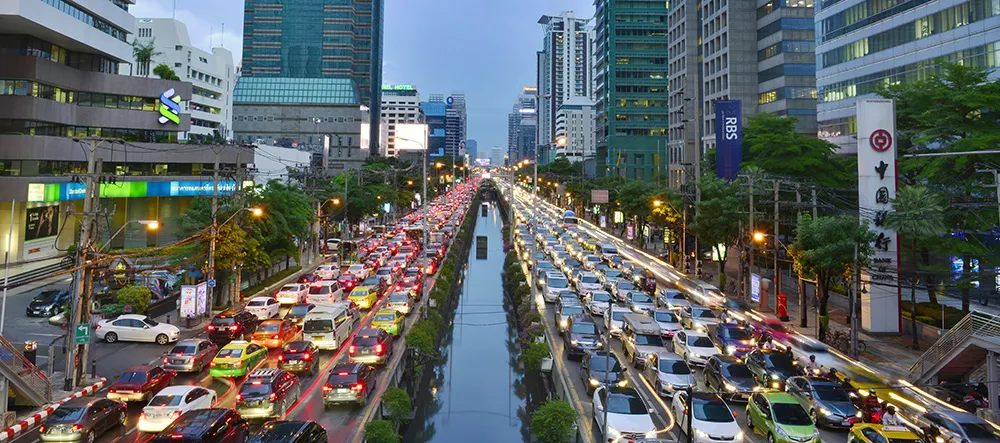London Congestion Trends, an in-depth study of the causes of traffic congestion in London between 2012 and 2015 published by Inrix, indicates that congestion in London is increasing, with journey times in Central London growing by 12 per cent annually. Inrix says this is consistent with data that shows that the London economy and population are growing, which normally results in an increase in gridlock. Further, unemployment and fuel prices are down, both of which usually mean a rise in traffic. Despite thi
May 18, 2016
Read time: 3 mins
London Congestion Trends, an in-depth study of the causes of traffic congestion in London between 2012 and 2015 published by 163 Inrix, indicates that congestion in London is increasing, with journey times in Central London growing by 12 per cent annually. Inrix says this is consistent with data that shows that the London economy and population are growing, which normally results in an increase in gridlock. Further, unemployment and fuel prices are down, both of which usually mean a rise in traffic. Despite this, car travel, defined as private cars, taxis and private hire vehicles (PHVs), has decreased in the Congestion Charge Zone and Central London since 2012 and overall demand for road travel has remained flat.
The analysis also found that there is a much greater reliance on public transport and other modes, to meet the demand for travel fuelled by London’s strong economic growth and record population levels. Of note, London Underground saw passenger numbers increase by 3.2 per cent from 2014 to 2015 – surpassing the levels seen during the 2012 Olympic Games, while cycling has also seen a dramatic upturn, with 12 per cent more people commuting to work and travelling by bike in the past year alone.
The report says this may explain flat traffic volumes in London, but it does not explain increasing congestion. Road supply is restricted by planned and unplanned incidents and between 2012 and 2015, the duration of planned roadworks in London rose by 362 per cent, resulting in 2,437 hours of disruption, one of the primary causes of increased congestion in the capital. The number of hours roads were disrupted by unplanned incidents, such as accidents, also increased, rising by 23 per cent over the same period.
Another cause of increased gridlock in London is likely a result of the booming ecommerce market, which is expected to top US$87 billion (£60 billion) in the UK in 2016. This may have spurred a sharp increase in the number of delivery vans on London’s roads. For example, the study found that the volume of light goods vehicles (LGVs) in the Congestion Charge Zone, which account for more than 17 per cent of all vehicles, is increasing year-on-year, and increased by 7.7 per cent over the study period.
“It is easy to speculate on the causes of congestion in London, but solving this problem requires a deeper understanding and awareness of the true factors,” said Dominic Jordan, chief data scientist, Inrix. “Through road improvements,1466 Transport for London is making significant efforts to future-proof the city, which will benefit both road users and the London economy. However, our study shows that roadworks like these, as well as a rise in goods vehicles, are the major causes of congestion in the capital.”
David Leam, Infrastructure director at non-profit organisation London First, commented: “London’s roads are increasingly congested, but this isn't down to a boom in car journeys. As this report shows, car traffic is actually decreasing in central London, while van traffic and roadworks have risen significantly. What's needed is for the new Mayor to ease off excessive roadworks, build new river crossings, devise a plan for managing freight, and revisit measures to control congestion, including charging.”
The analysis also found that there is a much greater reliance on public transport and other modes, to meet the demand for travel fuelled by London’s strong economic growth and record population levels. Of note, London Underground saw passenger numbers increase by 3.2 per cent from 2014 to 2015 – surpassing the levels seen during the 2012 Olympic Games, while cycling has also seen a dramatic upturn, with 12 per cent more people commuting to work and travelling by bike in the past year alone.
The report says this may explain flat traffic volumes in London, but it does not explain increasing congestion. Road supply is restricted by planned and unplanned incidents and between 2012 and 2015, the duration of planned roadworks in London rose by 362 per cent, resulting in 2,437 hours of disruption, one of the primary causes of increased congestion in the capital. The number of hours roads were disrupted by unplanned incidents, such as accidents, also increased, rising by 23 per cent over the same period.
Another cause of increased gridlock in London is likely a result of the booming ecommerce market, which is expected to top US$87 billion (£60 billion) in the UK in 2016. This may have spurred a sharp increase in the number of delivery vans on London’s roads. For example, the study found that the volume of light goods vehicles (LGVs) in the Congestion Charge Zone, which account for more than 17 per cent of all vehicles, is increasing year-on-year, and increased by 7.7 per cent over the study period.
“It is easy to speculate on the causes of congestion in London, but solving this problem requires a deeper understanding and awareness of the true factors,” said Dominic Jordan, chief data scientist, Inrix. “Through road improvements,
David Leam, Infrastructure director at non-profit organisation London First, commented: “London’s roads are increasingly congested, but this isn't down to a boom in car journeys. As this report shows, car traffic is actually decreasing in central London, while van traffic and roadworks have risen significantly. What's needed is for the new Mayor to ease off excessive roadworks, build new river crossings, devise a plan for managing freight, and revisit measures to control congestion, including charging.”









